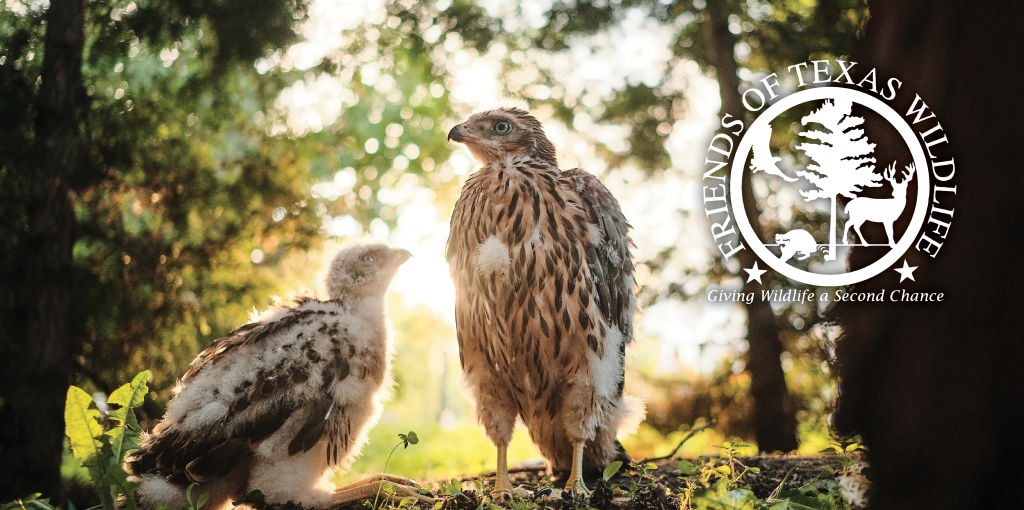We certainly have a wide variety of wading birds in our area, both permanent residents as well as migratory birds. Quite often, we have people call our wildlife center regarding “cranes” they have found. While it is possible that sandhill cranes or even whooping cranes might be spotted occasionally during winter months, we have no cranes that make their home in our area on a permanent basis. What we do have are two very large species of wading bird; the Great White Egret and the Great Blue Heron. This month’s article will focus on the beautiful Great Blue Heron.
The Great Blue Heron is a very striking bird with a blue/gray back and black sides. Their belly is gray and white striped. Males and females are quite similar in color and size. They have a huge, 6’ wingspan, and hold their neck in a distinctive S shape while flying while trailing their long legs behind them. They are the largest herons in North America. Great Blue Herons have a permanent range in much of the southern United States, including all of Texas.
Great Blue Herons generally breed in colonies located in trees close to lakes or other wetlands. Occasionally they will construct a nest on the ground within wetland reeds or mangroves. The male generally will collect much of the nesting material and bring it back to the female, who then weaves a saucer-shaped nest. The pair then lines the nest with pine needles, moss, dry leaves, and reeds. Nest building can take up to two weeks, after which the female lays two to six eggs. Both parents incubate the eggs for 25 to 30 days. When chicks hatch, their eyes are open and they are covered in pale gray down. The chicks remain in the nest anywhere from 49 to 81 days with both parents feeding them. A nesting pair may raise one or two broods each year and generally remain monogamous during that time, but they usually choose new partners each year.
Great Blue Herons will eat nearly anything they can catch, including fish, amphibians, reptiles, small mammals, insects, crustaceans, and other birds. They hunt mainly by wading in shallow water and impaling prey with their spear-like bill. They will also hunt from floating objects such as logs and docks. They generally forage and hunt for food alone. They will defend their feeding territories from other predators by defensively approaching intruders (other birds or even humans) with their head thrown back, wings outstretched, and bill pointed up in the air. Herons are sometimes unwelcome visitors to yards that include ponds; a length of drainpipe placed in the pond can provide fish a place to hide from feeding herons and other predators.
While their numbers are thought to be stable, Great Blue Herons are being impacted by loss of habitat (especially nesting areas) due to logging, development, and traffic (both on roadways and waterways). Pollution and other causes of reduced water quality also can have an impact on these birds.
To learn more about what we do and view pictures of many of the animals we assist, please visit our Facebook page at www.facebook.com/SavingTexasWildlife. Details can be found at www.ftlw.org, and then click on “How to Help”. We also have a great deal of helpful information on our website about other species of animals and how to assess if they need help or not. If you need assistance with an animal in need, please email us a ftwl.help@gmail.com.
